I’ve already removed my outer shirt and rain pants and stowed them in my knapsack when the snow begins to fall. Just a few flakes. Great timing.
I don’t reach into my knapsack to retrieve the clothing because it’s suddenly too cold to take off my jacket in order to put the shirt back on. As for the rain pants, I have no place to sit down to pull them over my hiking shoes and damp jeans.
I’m standing at a bus stop near the Ryuzu Falls in Nikko, Japan, about a hundred miles north of Tokyo. I glance at the Japanese couple standing next to me. They’re wearing masks (as does almost everyone in Japan). I’m not (it’s no longer required). Their eyes crinkle in a smile, and we all start laughing. It had just been sunny a few minutes before, and now we’re shivering!
I wouldn’t be in this predicament if I’d paid for an organized tour. I wouldn’t be waiting at a bus stop. I wouldn’t be cold. I also wouldn’t be laughing.
Sometimes I like to pay someone to handle all the travel details, even though it can be expensive. Organized tours streamline the entry process into important places. They can provide you with special access to out-of-the-way gems, like the guide I had in Xi’an, China, who took us to an offbeat hotel for the best Peking Duck ever.
With tours, you don’t have to strategize or think or fret. You also don’t meet any locals or enjoy the rewards of figuring things out on your own.
So there are times when I just wing it. Such was my choice when I found myself in Tokyo for a few days last week after flying across the Pacific to hop down to Okinawa to visit my son and his family.
Solitary sightseeing carries risks. I got lost more than once and had to ask for help. There was a lot of pointing in various directions and asking, “Doko desu ka?,” which means, “Where is it?” People in Japan were more than happy to help me, and most spoke a little English — at least in Tokyo.
I encourage all of you to get lost once in a while. Think of it as an adventure to embrace. And since this is supposed to be a newsletter about money, you also save a ton of cash traveling this way.
So here’s a quick snapshot of my trip for all you travel bugs out there.
First, the air fare. I flew cheap. I always think, “I’m going to splurge and fly business class to Japan so I can sleep on the plane.” But then I look at business class fares and think, “WHAT? That’s outrageous! I could buy (fill in the blank) with that. It’s only 11 hours, I’ll go coach again.”
This time I went really coach. I flew to Tokyo on Zipair, a low-budget carrier owned by Japan Airlines. The one-way fare of $480 from LAX was far less expensive than anything else I could find. I also paid for an $80 “package” that allowed me to choose my seat, check a bag, and order a meal (I had to buy the whole package if I wanted to pick my seat). Other passengers didn’t pay the $80. Instead, they brought their own food on board and ended up in middle seats across the ocean.
Boarding flights to Japan is always an exercise in organized chaos. There’s a lot of frantic running around by gate agents who act as though this is their first day on the job. I’m equally amazed at how quickly Japanese passengers get on a plane, stow their stuff and sit. Same with deplaning. Americans could learn from them.
Zipair flies 787s, and I found the flight to be a great value. In fact, I’d say it was better than most ANA flights I’ve had, even though all the food and drinks had to be paid for, even water. (One note: Japanese airlines are not big on running the a/c.)
I would use Zipair again.
I’ve been to Japan a lot. I even wrote about how difficult it was to visit the country when it reopened after Covid. But most of my stays in Tokyo have been short, and I’ve only explored the city a couple of times (along with Kyoto, Osaka, and Hiroshima). I’m usually focused on getting to Okinawa. So while the goal of this trip was to see my son, daughter-in-law, and adorable grandchildren, I decided to spend a little more time in Japan’s capital.

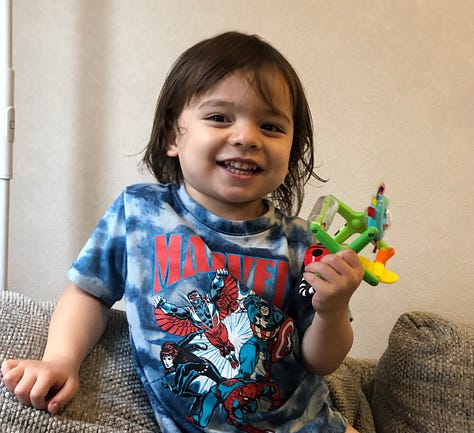

Japan is like no other country, with a fascinating culture, a beautiful aesthetic, polite people, and exceptional food. It can also be a tad weird — I just missed this year’s “Penis Fest” in Kawasaki. But who am I to judge? While I was away, back in America there was another school massacre involving someone reportedly suffering from a mental disorder who nevertheless bought several weapons legally… and Gwyneth Paltrow prevailed in the One Percenters Trial of the Century.
It’s always nice to get away.
So while I decided to do a little more sightseeing, I also decided to do it on the cheap, which meant going on my own. Forty years ago I backpacked around Europe with nothing but a Let’s Go Europe guidebook. Surely I could find my way around Tokyo and environs in 2023 with Google Maps and Google Translate.
I arrived late in the afternoon, and my first goal was to find good ramen. I like ramen a lot. I heard that some of the best in town could be found at the appropriately-named Ramen Street inside Tokyo Station.
Tokyo Station is an immense underground train station and mall. It’s a place you can get lost in, both literally and figuratively. Google Maps wasn’t very helpful once I got inside the structure, and I was about to ask someone “Doko desu ka?” when I saw a sign with English subtitles pointing to a lower level where Ramen Street is located.
Once there, I found myself in a small corner filled with eight ramen shops, each with its own ticket machine out front. There was a sign (which included English) saying that you had to pick your restaurant, buy a ticket for your meal, and then wait to be seated. I chose Rokurinsha, and my timing was perfect, arriving between the lunch and dinner rushes.
After purchasing my ticket for spicy pork ramen, the waitress waved me in and seated me at a stool along the wall. She took my ticket and soon the ramen arrived — thick, ropey noodles served in a rich and spicy broth with flavorful pork, plus a bowl of rice on the side. I’d read that Rokurinsha serves Tsukemen ramen, where the noodles are separate from the broth and you dip them, but that was not the case with me. It all came in one bowl. I washed it down with Asahi Super Dry. Oishii desu! (Delicious!).
After dinner I walked around the neighborhood to get a feel for the place before heading to my hotel. The next morning I had to rise early to catch the train to Nikko.
By the way, I primarily used public transit in Tokyo, rather than cabs, because it’s cheap and efficient. That said, figuring out how to get to your destination is a little overwhelming until you learn how to read the subway maps. Once your eyes can focus and the panic dies down, you learn there is a certain logic to them.
Every subway line has its own letter and color. Stop numbers go up or down based on direction. Ticket machines have an option to display instructions in English. Whenever I typed a destination into Google Maps, I was told which subway to take. There are plenty of signs inside stations directing you where to go (usually with English subtitles). You just have to be patient with yourself and take a moment to get your bearings, even though everyone else is moving past you faster than a bullet train.
Looking at the map above, the Ginza line (orange) was closest to my hotel. I entered the subway station at stop G10, Kyobashi, and I rode the train nine stops north to G19, Akasuka. The cost was around $1.50. There I transferred to the train.
I chose Nikko because I heard how beautiful it is up in the mountains. I wasn’t disappointed. I bought a day pass online ahead of time to cover bus fares around the region ($12), and I paid for a seat on a limited express train to travel there faster (about $32 round trip). Tickets to the shrines and other historical buildings in the park had to be bought on site (I spent about $10 on those).
Nikko is an amazing place. The highlight was the shrine to Shogun Ieyasu Tokugawa, perhaps the most ornate burial spot in Japan. Tokugawa managed to unite Japan in 1603 through a combination of brutality, negotiation, and mercy. His legacy of military rule lasted 265 years. I learned all this by renting a self-guided audio tour in English for $4 which worked intermittently as I walked around the complex.
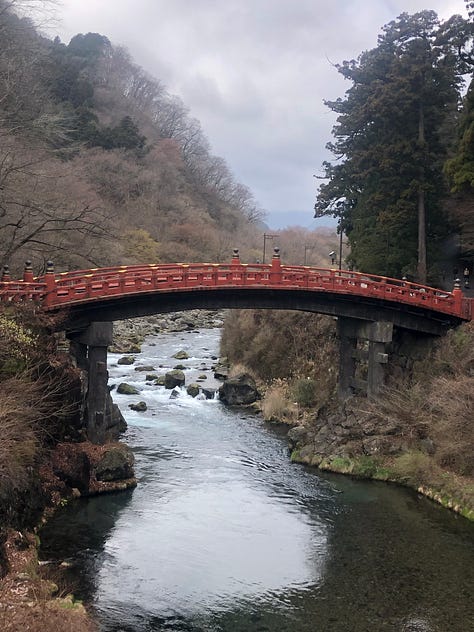
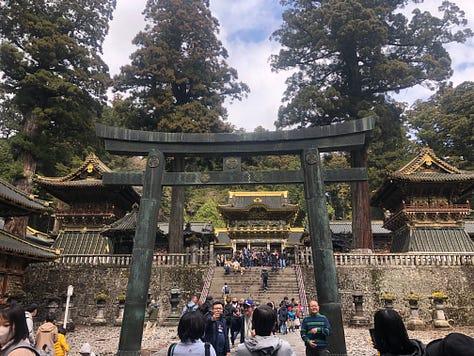

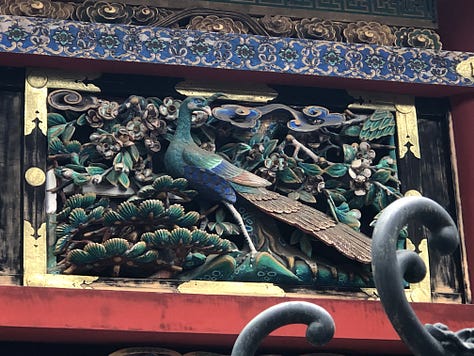
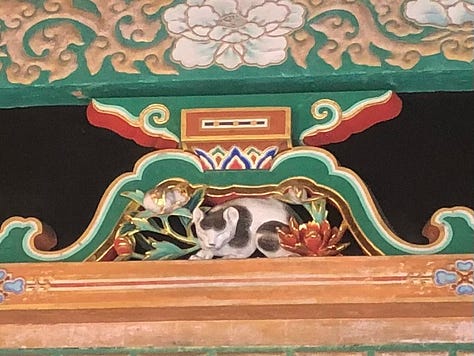
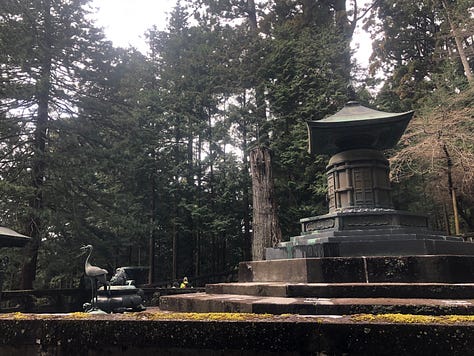


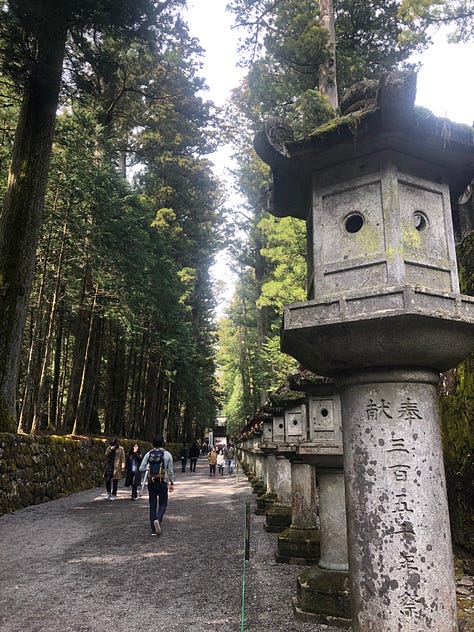
But my favorite part of Nikko was Kegon Falls, considered one of Japan’s most beautiful sights, dropping more than 300 feet into Lake Chūzenji. To get there, I rode a bus that careened around twists and turns on a windy road you’ve probably seen in car commercials. It was better than an E-ticket ride at Disneyland (remember those?).
The area is often crowded with tourists, but due to pure luck, I arrived at the viewing platform alone. I stood there quietly for several minutes to take it in.
Then I walked back to the bus station, snacking along the way, buying a fried potato cake at one stand ($4), and some hot chocolate at another ($3). I dawdled, sometimes meandered, and occasionally I picked up the pace. I didn’t have to be anywhere in particular or consult with anyone about anything. There were no debates about which way to go or what to eat. I was free to explore at my leisure. No one bothered me, and I didn’t have to make conversation.
It was wonderful.
Eventually I hopped on another bus to drive along the lake to see another waterfall — Ryuzu, which means “dragon’s head.” Here, local tourists removed their masks and whipped out their selfie sticks.
That’s when the snow started falling, and I decided it was time to get back to Tokyo.
I arrived at the train station in Nikko earlier than I expected, so I stood in line to change my ticket. They don’t speak much English once you get out of the big cities, so my very limited Japanese came in handy, along with Google Translate. My advice: Don’t be afraid, just speak into your phone and watch the translation pop out, then show it to the person you’re trying to communicate with! Magic!
On the train ride home, I sat next to a young mother and helped her get situated with her sleeping child. It made me miss my grandchildren. As we got closer to Tokyo, businessmen hopped on with their briefcases. So did young Japanese women in wide-legged pants and long, formless coats. There were also a few Americans, almost all of them young men.
I was the only white, bottle-blonde grandmother on board, and I caught a few people looking at me, trying to figure out what I was doing there all by myself.
The next morning I took the subway to Ueno Park, Tokyo’s version of Central Park, home to 1,000 cherry trees that are currently in full bloom. I downloaded a walking tour of the park, but once I got there and saw all the trees fanned out with pinkish-white flowers, I never looked at my phone again… except to take about a million photos. I just wandered around.

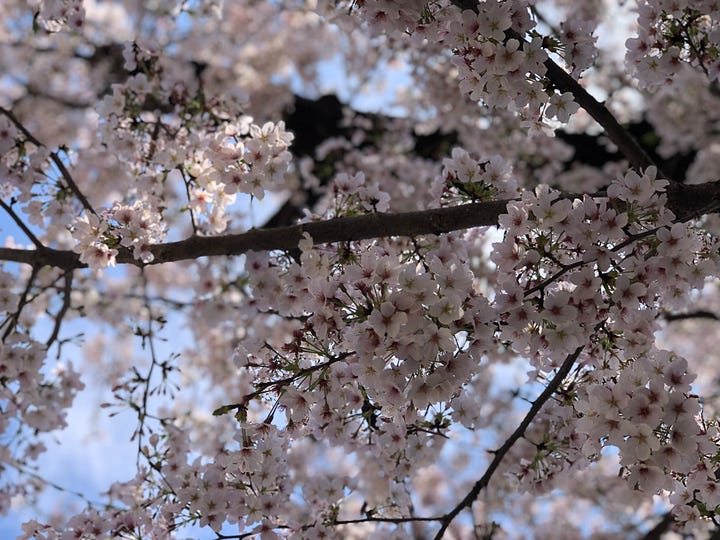
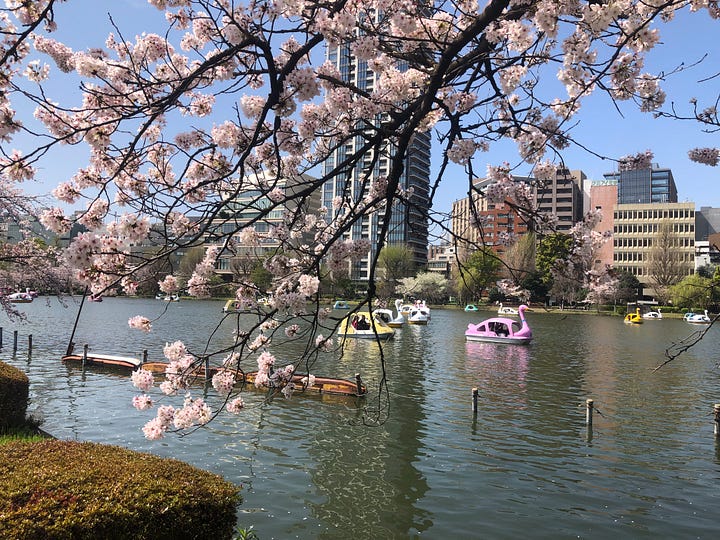
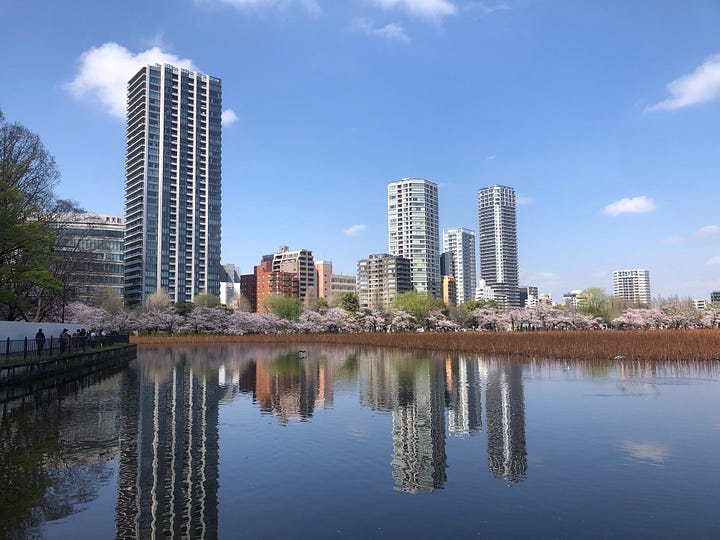
Then my phone died. I didn’t care. I enjoyed a couple of hours soaking in the sun on a day that was supposed to be rainy.
Later, after grabbing lunch of gyoza at the subway station near my hotel, I walked over to the Mitsubishi Ichogokan Museum to see an exhibit of two Japanese artists from the mid-19th century, Tsukioka Yoshitoshi and Utagawa Yoshiiku. Their work celebrated the warrior culture at a time when the Shogun era was ending. Yoshitoshi doubled down on bold images of mayhem and murder, while Yoshiiku clung to a more traditional style, but he wasn’t as successful. He ended up making drawings for a newspaper.
When a museum employee tried to explain to me in Japanese that I needed to look at a particular painting from two perspectives to see two completely different images, I didn’t understand a word she said. Looking confused, another person immediately stepped in and explained in perfect English. This has been my experience in Tokyo. If you stand still and look perplexed, eventually someone(s) will approach you and ask in English if they can help. How cool is that?
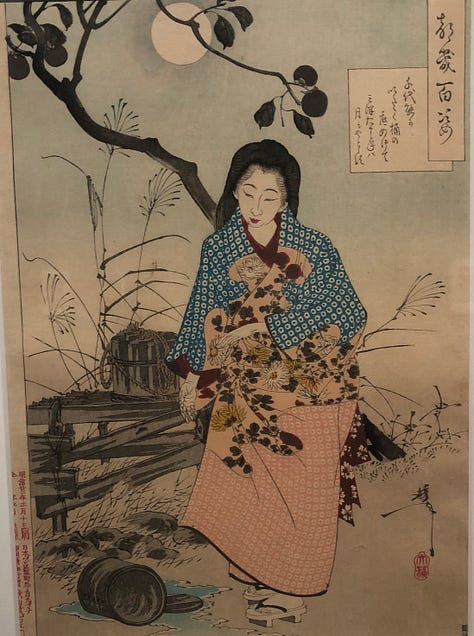
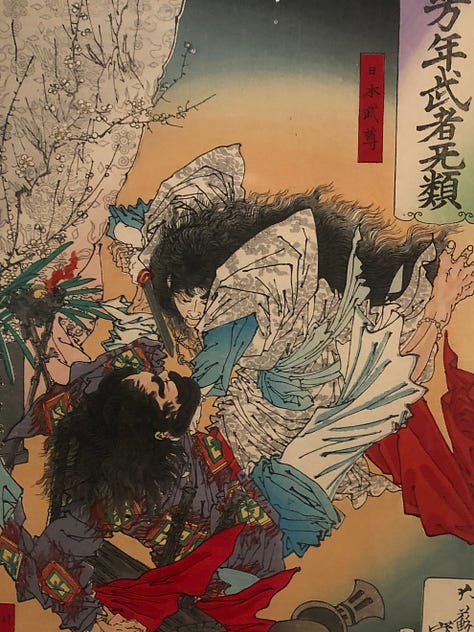
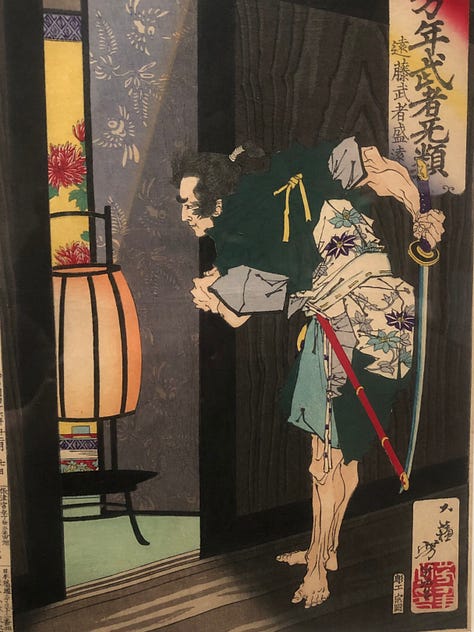
Finally, it was time to leave for the airport and head back to the U.S. of A. I prided myself on a successful walk-about that had renewed my confidence in going it alone.
I wondered, should I be like a local and take the train to the airport? Nah, time to be more American.
I splurged on a cab.
Where have you wandered on your own and stumbled into something wonderful? Share in the comments.







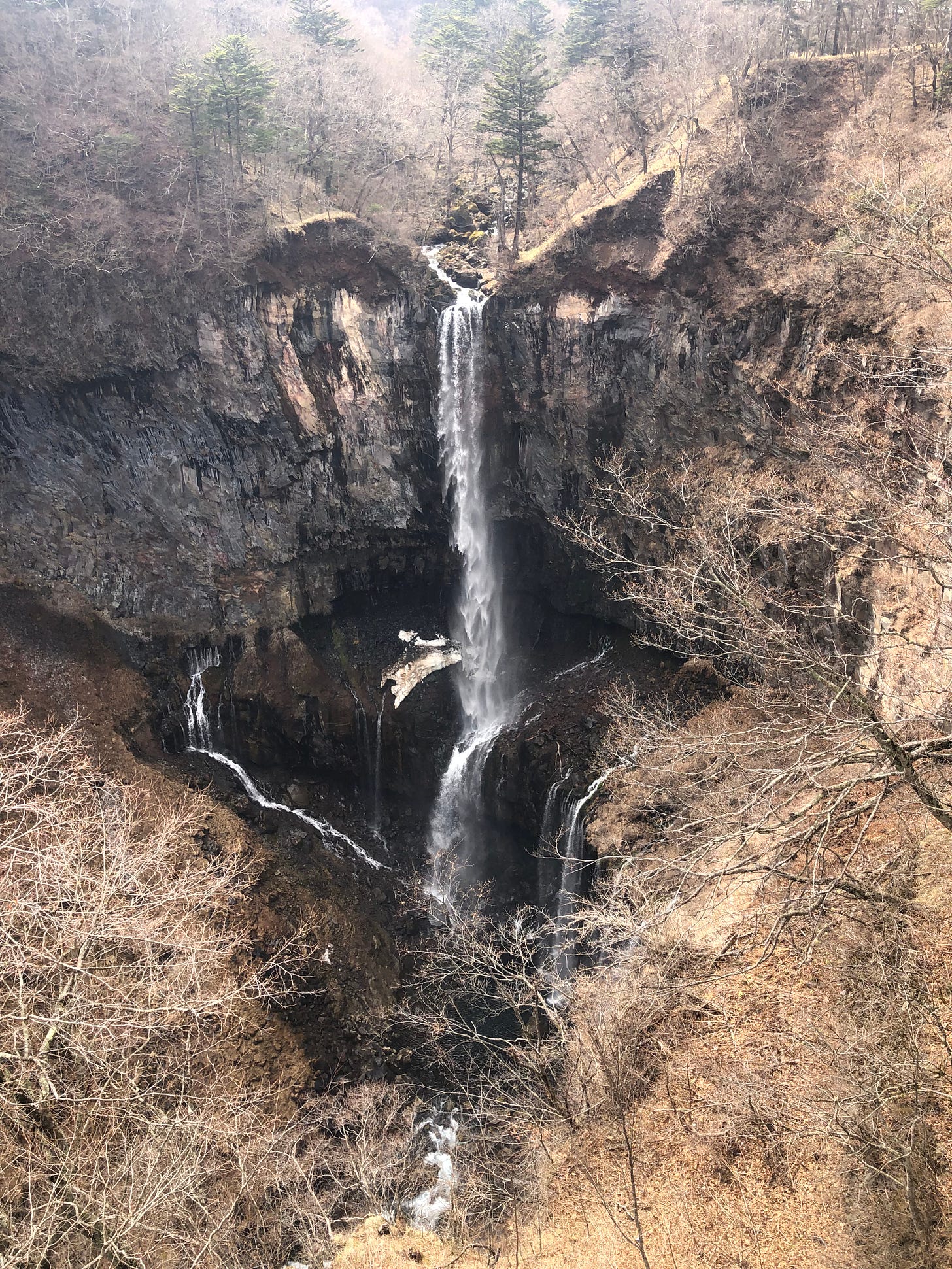


Do you ever write something that I don't stop whatever I'm doing to enjoy the journey?
This is exactly why we love Jane Wells. Go!